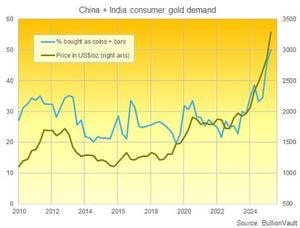For as long as history has been written, the young have taken to the streets when they’ve felt their future slipping out of their hands. From the iconic sacrifices of Bhagat Singh and Chandra Shekhar Azad in their early twenties to the roaring student uprisings that swept France in 1968, youth-led protest has always been the engine of change. Fast-forward to 2025, and it’s clear that Generation Z is picking up the torch—only now, their tools and symbols are unmistakably digital, globally shared, and tinged with pop culture flair.
Last week, the world watched as youth-led demonstrations in Madagascar toppled President Andry Rajoelina’s regime. The immediate spark? A lack of basic necessities like water and electricity. But the embers of unrest had been smoldering across continents: in recent months, Gen Z activists have helped unseat leaders in Nepal and Peru, and fueled street protests in Indonesia, the Philippines, Kenya, Morocco, Bangladesh, and Sri Lanka. As The Week pointed out, “the ‘One Piece’ pirate flag has become the unofficial symbol of young resistance” across Asia, Africa, and South America.
This flag, with its grinning skull donning a straw hat, is more than just a nod to a beloved manga. Historically, the black skull-and-crossbones—known as the Jolly Roger—was the banner of pirates, meant to strike fear into the hearts of those who saw it. In One Piece, the Japanese comic series created by Eiichiro Oda in 1997, the flag is reimagined: the Straw-Hat Pirates, led by the irrepressible Monkey D. Luffy, stand for resilience and the quest for freedom. Their adventures, which have spanned manga, anime, and now a Netflix live-action remake (with a much-anticipated second season due in 2026), have become a rallying cry for a generation disillusioned by the status quo.
“What connects these youth-led protests is a shared sense that traditional political systems aren’t responsive to their generation’s concerns—whether that’s corruption, climate change or economic inequality,” Sam Nadel, director of Social Change Lab, told The Independent. “Protest then becomes the logical outlet.”
The resonance of the Straw-Hat flag is no accident. In 2023, it made appearances at pro-Palestinian demonstrations in Indonesia and New York, with social media posts declaring “straw hats for Palestine.” By August 2025, as mass protests erupted in Indonesia over lawmakers’ lucrative perks—and a police crackdown that resulted in the death of a rideshare driver—the flag was everywhere: fluttering above crowds, graffitied on walls, and waved at rallies. The following month, the symbol was seen in the Philippines, where tens of thousands protested corruption over flood relief funds, and in Nepal, where outrage over a social media ban led to the resignation of Prime Minister K P Sharma Oli. The One Piece flag even hung outside the gates of Nepal’s parliament after the building was set ablaze by demonstrators.
It’s not just Asia. The Straw-Hat flag has been spotted at protests in France, the United States, and Peru—testament to the fact that Gen Z, despite being divided by borders, has grown up in a world where memes, hashtags, and pop culture references travel at the speed of light. As Professor Nuurrianti Jalli observed in The Conversation, “A meme, gesture or flag can instantly carry meaning across divides of language, religion or geography. This form of connection is built on recognisable cultural codes that allow young people to identify with each other even when their political systems differ.”
Social media is the lifeblood of this new activism. Platforms like TikTok and Instagram spread solidarity, while Discord—a chat app popular among gamers—has become a central tool for organizing, especially when governments try to silence dissent by shutting down traditional communication channels. In Morocco, for example, protests against the government’s lavish spending on 2030 FIFA World Cup stadiums (while healthcare funding lagged) began on a Discord server called ‘GenZ 212,’ which now boasts over 200,000 subscribers. In Nepal, Discord helped young activists debate and strategize over who should lead the country next.
“There’s a growing cross-border dimension to Gen Z activism,” noted the Institute for Economics and Peace. “Movements in one country learn and draw inspiration from movements in another. Shared strategies include decentralised leadership, the rapid circulation of digital content, and the use of cultural symbols.”
But Gen Z’s flair for symbolism is hardly new. Throughout modern protest history, pop culture has provided a visual shorthand for dissent. Think of the three-finger salute from The Hunger Games, adopted by protesters in Thailand during the 2014 military coup and again in Myanmar after the 2021 ousting of Aung San Suu Kyi’s government. Or Pepe the Frog, a cartoon meme that has ricocheted from pro-democracy rallies in Hong Kong and Myanmar to, more controversially, far-right circles in the US. The Guy Fawkes mask from V for Vendetta became the face of the Anonymous hacker collective and was a fixture at the 2011 Occupy Wall Street protests.
What’s different now is the speed and scale at which these symbols catch fire. Social media platforms “defy physical distance and turbocharge a shared language and culture,” as The New York Times’ Katrin Bennhold put it. Discord, in particular, has been instrumental in circumventing government crackdowns and building decentralized, leaderless movements. This makes the protests “hydra-headed and harder to suppress,” according to the Financial Times—but it also means they can be vulnerable to charismatic strongmen or lose momentum without clear policy goals.
There’s a paradox at the heart of these revolutions. Most of the countries where Gen Z has risen up—like Nepal and Madagascar—are democracies, albeit ones plagued by corruption, inequality, or illiberal tendencies. The young demonstrators aren’t calling for the wholesale rejection of democracy; rather, they’re demanding reform and a renewal of institutions they feel have failed them. Yet, as events in Madagascar and Nepal show, toppling a leader is just the beginning. In Madagascar, the military has now seized power, while in Nepal, the interim prime minister has sidelined the youth movement. As The New York Times noted, “The young Gen Z revolutionaries have real power. But they don’t have the power to control what they’ve begun, or to ensure that the movements they started actually improve their lives.”
Still, the message is clear: Gen Z is reshaping the vocabulary of dissent, armed with memes, manga, and a sense of global community that transcends borders. Whether their energy can be channeled into lasting political change remains to be seen—but for now, the Straw-Hat flag flutters defiantly over a new era of protest.




